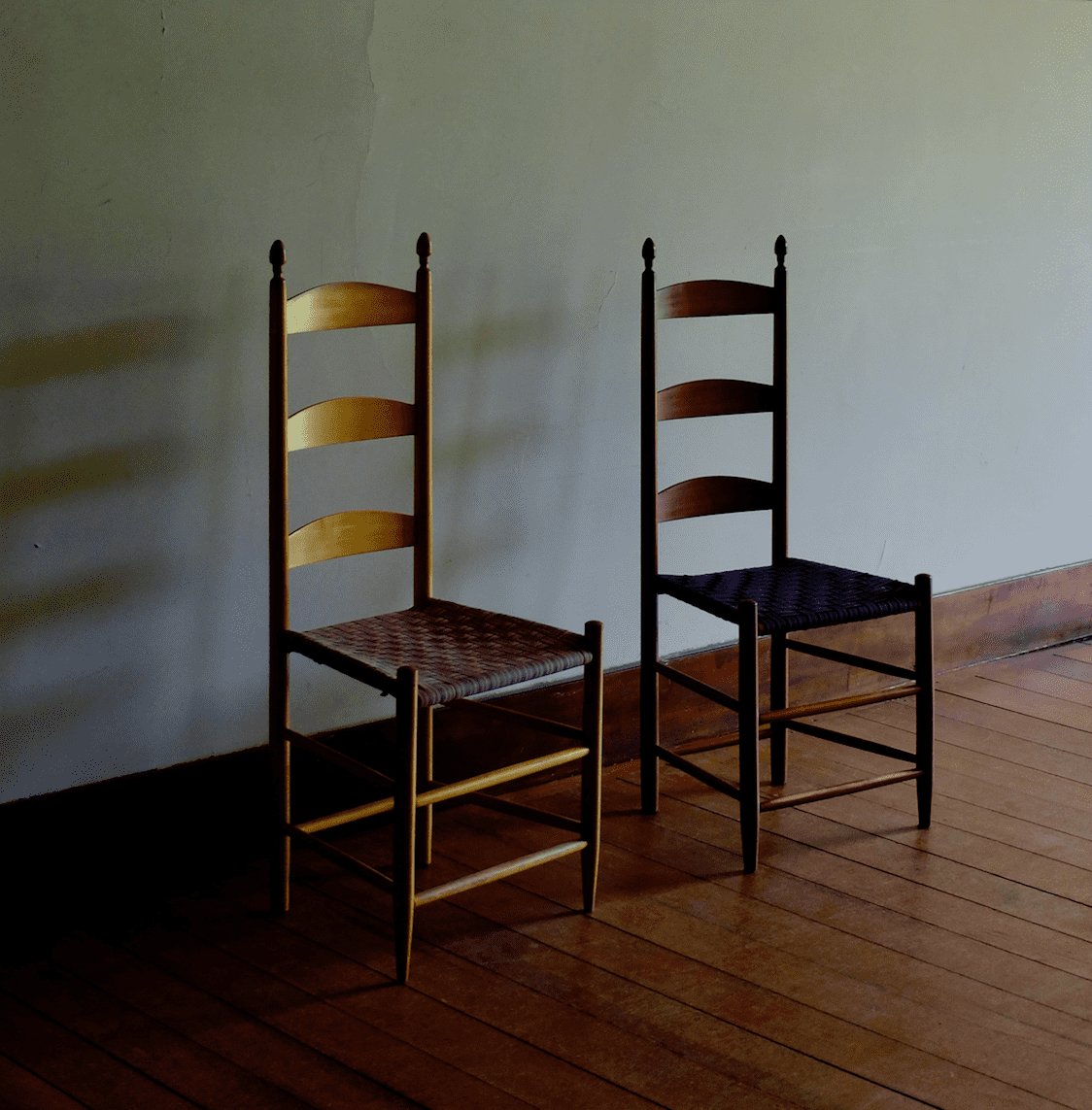The Shaker movement of the early 1800’s produced some of the best American design. Their concept of design required a beauty more profound than just the surface appearance. In the book “Shaker Built” by Paul Rocheleau and June Sprigg this idea of beauty is expressed as follows:
“The appearance of things—including buildings—mattered in the Shaker world, but not in the same way that it generally mattered in the World…Physical homeliness was perhaps less of a handicap in the Shaker world than anywhere else because the beauty of the spirit was what was deemed important.”

Shakers are perhaps known best for their classic chair designs. The woven seat provide comfort, the shape was sturdy, and could be easily stored out of the way on the wall
In the Shaker world, the appearance of a thing or person mattered only to the extent that it revealed the underlying function. Whatever did not interfere with function, served the function.
The following rule of thumb for Shaker creations is a beautifully simple code to live by for any designer.
Shaker Design Rule of Thumb
- If it is not useful or necessary, free yourself from imagining that you need to make it.
- If it is useful and necessary, free yourself from imagining that you need to enhance it by adding what is not an integral part of its usefulness or necessity.
- And finally: If it is both useful and necessary and you can recognize and eliminate what is not essential, then go ahead and make it as beautifully as you can.
